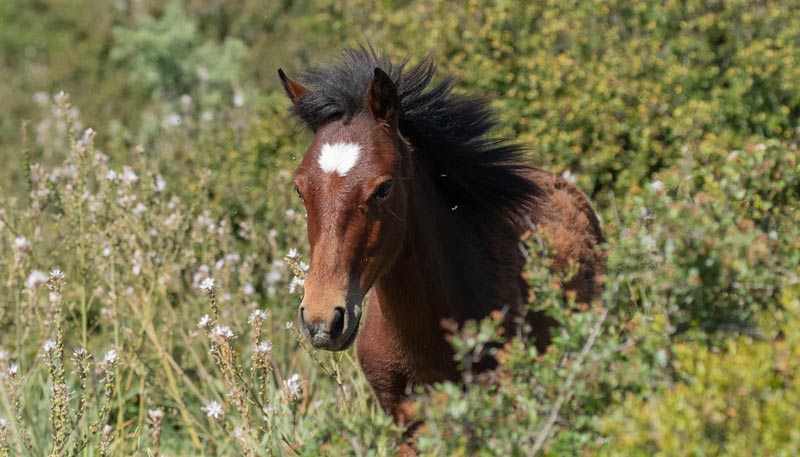Infection
Concerns over new parapoxvirus that causes skin infections in horses
Researchers have identified a novel parapoxvirus that causes dermatitis in horses, saying it may have the ability to infect humans too.
Most known parapoxviruses are zoonotic — that is, they show an ability to be transmitted between animals and humans.
Any novel viruses identified in animals should be treated with concern, Jenni Virtanen and her fellow researchers wrote in the journal Emerging Infectious Diseases.
Parapoxviruses usually cause contagious skin infections in ruminants and occasionally infect other species, including humans.
Parapoxviruses include the orf virus, bovine papular stomatitis virus, pseudocowpoxvirus, red deerpox virus and grey sealpox virus. All of them, except grey sealpox virus and red deerpox virus, are zoonotic.
The background to the discovery of the equine parapoxvirus goes back to 2013, when a severe infection caused by a parapox-like virus was first verified from a horse euthanized in Finland.
However, formal classification of the parapoxvirus remained unclear because of limited sequence data and lack of amplification in numerous PCR-based tests.
Virtanen and her colleagues, in a research letter to the journal, said no other clinical cases were confirmed until 2022, when an epidemic of dermatitis emerged in horses across Finland.
Parapoxvirus infection was subsequently identified in several of the cases using molecular-based testing methods, including PCR.
Partial sequences were 97% identical to the sequences from the 2013 case, with identity of 79% to 87% to other parapoxviruses.
To better characterize the virus, the researchers analyzed DNA extracted directly from a skin lesion from the 2013 case and subjected it to next-generation sequencing with two different protocols.
The first protocol, relying on a pool of poxvirus primers, was insufficient to acquire enough sequence data. However, with a PCR-free approach, using enrichment of the viral DNA, they acquired sequence data amounting to almost the full genome.
The researchers said they were unable to fully assemble and orient the data because they had no reference genome — a critical component in future investigations such as this.
“The lack of high-quality DNA and unsuccessful virus isolation attempts further complicated the sequencing process.”
Phylogenetic analysis, looking for poxvirus core genes, together with the high guanine and cytosine content and disease characteristics, indicated they were dealing with a novel parapoxvirus, which they called equine parapoxvirus.
The final taxonomic position and the possible differences of human and equine-derived variants will require more data, they said.
“Most known parapoxviruses are zoonotic, and any novel virus detected in animals should be treated with concern,” they wrote.
“Thus, considering the tendency of parapoxviruses to cause diseases in humans, equine parapoxvirus has a zoonotic potential. It is therefore important to sample humans and other animals in contact with infected horses.
It is also critical to establish diagnostic protocols due to shortcomings with current parapoxvirus PCR testing to detect the equine version.
“In terms of veterinary importance, this virus poses a threat for horses that could translate to financial losses for owners.”
The researchers said they hoped the information they provided would inform the development of proper diagnostic tools and also enable the establishment of prevention measures.
Virtanen is a postdoctoral researcher at the University of Helsinki in the field of clinical microbiology. Her research interests include zoonotic viruses and pathogens in human–animal interface.
The other researchers comprised Lara Dutra, Ilya Plyusnin, Katja Hautala, Teemu Smura, Olli Vapalahti, Tarja Sironen, Ravi Kant and Paula Kinnunen, all with the University of Helsinki in Finland; and Maria Hautaniemi, with the Finnish Food Authority in Helsinki. Kant is also affiliated with the Medical University of Gdansk in Poland.
Virtanen J, Hautaniemi M, Dutra L, Plyusnin I, Hautala K, Smura T, et al. Partial Genome Characterization of Novel Parapoxvirus in Horse, Finland. Emerg Infect Dis. 2023;29(9):1941-1944. https://doi.org/10.3201/eid2909.230049
The research letter, published under a Creative Commons License, can be read here.
• Receive a notification when a new article is posted:

